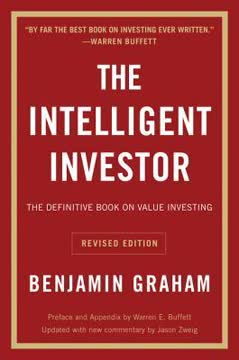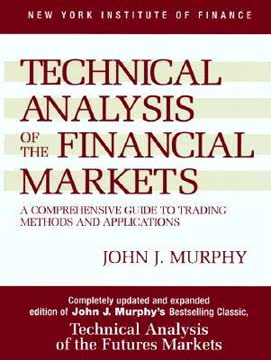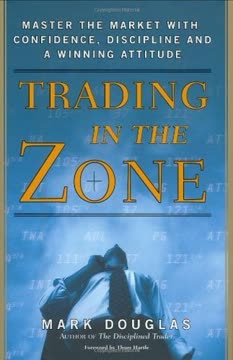نکات کلیدی
1. تسلط بر جهت بازار برای حفاظت از سرمایهگذاریهایتان
بازار به اینکه ما چه کسی هستیم، چه فکر میکنیم یا چه احساسی داریم، اهمیتی نمیدهد.
از رهبری بازار پیروی کنید. درک جهت بازار برای حفاظت از سرمایهگذاریهایتان حیاتی است. با مطالعه الگوهای تاریخی و نظارت بر شاخصهای کلیدی مانند:
- روزهای توزیع: زمانی که شاخصهای اصلی بازار با حجم بالاتر پایینتر بسته میشوند
- روزهای پیگیری: تأیید یک کف بازار بالقوه با یک روز صعودی قوی با حجم بالاتر
- عملکرد قیمت و حجم سهامهای پیشرو
با تسلط بر این مفاهیم، میتوانید زمان ورود و خروج خود را بهتر تنظیم کنید و از زیانهای قابل توجه در دوران رکود بازار جلوگیری کرده و خود را برای سود در دوران صعودی آماده کنید.
2. اجرای استراتژی سود و زیان 3 به 1 برای کسب سود مداوم
شما باید در نظر بگیرید که برخی از سهام خود را زمانی که 20 تا 25 درصد از قیمت خرید شما افزایش یافتهاند بفروشید و هر زیانی را در حداکثر 7 یا 8 درصد قطع کنید.
تعادل ریسک و پاداش. این استراتژی به شما اجازه میدهد که تنها در 30 درصد از خریدهای سهام خود درست باشید و همچنان سرمایه خود را حفظ کنید. اینگونه عمل میکند:
- فروش برندگان زمانی که 20-25% افزایش یافتهاند
- قطع زیانها در 7-8%
- استثنا: نگهداشتن سهامهایی که در 1-3 هفته 20% افزایش یافتهاند برای حداقل 8 هفته
این رویکرد به حفاظت از سرمایه شما کمک میکند و در عین حال امکان برندگان بزرگ را فراهم میکند. همچنین تصمیمگیری منظم را تشویق میکند و وابستگی احساسی به سهام را از بین میبرد.
3. شناسایی و سرمایهگذاری در بهترین سهام با استفاده از معیارهای CAN SLIM
تنها قانونی که از آن پیروی میکند، قانون عرضه و تقاضا است.
تمرکز بر عملکردهای اثباتشده. سیستم CAN SLIM به شناسایی سهام با بالاترین پتانسیل برای سودهای قابل توجه کمک میکند:
- C: درآمد سهماهه جاری 25% یا بیشتر
- A: افزایش درآمد سالانه
- N: محصولات جدید، مدیریت یا شرایط صنعتی
- S: عرضه و تقاضا
- L: رهبر در صنعت خود
- I: حمایت نهادی
- M: جهت بازار
با تمرکز بر این معیارها، شانس خود را برای سرمایهگذاری در شرکتهایی با اصول قوی و حرکت بازار افزایش میدهید. به خصوص به رشد درآمد توجه کنید، زیرا اغلب محرک اصلی افزایش قیمت سهام است.
4. شناسایی زمان فروش سهام برای حداکثر کردن سود و حداقل کردن زیان
اشتباه نکنید: مدیریت یک پرتفوی متمرکز از سهام عادی نیاز به انضباط و مهارت دارد.
توسعه یک استراتژی فروش منظم. دانستن زمان فروش به همان اندازه مهم است که دانستن زمان خرید. سیگنالهای کلیدی فروش شامل:
- افزایشهای اوج: افزایش سریع قیمت و گسترشهای قیمتی وسیعتر
- پایههای مرحله آخر: پایههای مرحله چهارم بیشتر احتمال شکست دارند
- شکست قدرت نسبی: زمانی که خط RS یک سهام نتواند به اوجهای جدید برسد
- تقسیم سهام بیش از حد: اغلب نشانهای از اوج
علاوه بر این، همیشه به قوانین از پیش تعیینشده خود برای قطع زیان پایبند باشید. با پیروی مداوم از این دستورالعملها، میتوانید سودهای خود را حفظ کرده و زیانهای خود را محدود کنید و در نهایت عملکرد کلی سرمایهگذاری خود را بهبود بخشید.
5. مدیریت مؤثر پرتفوی خود برای بهینهسازی نتایج
مدیریت یک پرتفوی سهام مانند مراقبت از یک باغ است.
سرمایهگذاریهای خود را پرورش دهید. مدیریت مؤثر پرتفوی شامل:
- تمرکز: تمرکز بر تعداد محدودی از سهام با کیفیت بالا
- تنوع در زمان: به تدریج به موقعیتها اضافه کنید
- تغذیه اجباری: انتقال وجوه از عملکردهای ضعیفتر به قویتر
- بررسی منظم: ارزیابی داراییهای خود به صورت هفتگی، ماهانه و فصلی
از اشتباهات رایج مانند تنوع بیش از حد، میانگینگیری در موقعیتهای زیانده و نگهداشتن عملکردهای ضعیف خودداری کنید. در عوض، بر بهترین ایدههای خود تمرکز کنید و آماده باشید که با سهامهایی که انتظارات شما را برآورده نمیکنند، قطع رابطه کنید.
6. درک روانشناسی سرمایهگذاری و اجتناب از اشتباهات رایج
شما زمانی که باید بترسید امیدوارید و زمانی که باید امیدوار باشید میترسید.
بر احساسات خود مسلط شوید. سرمایهگذاری موفق نیازمند غلبه بر موانع روانشناختی است:
- از تعصب تأیید خودداری کنید: به دنبال اطلاعاتی نباشید که فقط دیدگاههای موجود شما را تأیید میکند
- در برابر وسوسه میانگینگیری مقاومت کنید: افزودن به موقعیتهای زیانده اغلب به زیانهای بزرگتر منجر میشود
- عاشق سهام نشوید: آماده باشید که زمانی که اصول تغییر میکند بفروشید
- جمعیت را نادیده بگیرید: اکثریت اغلب در نقاط عطف مهم بازار اشتباه میکنند
با درک و کنترل این عوامل روانشناختی، میتوانید تصمیمات منطقیتر و مبتنی بر داده بگیرید و از اشتباهات پرهزینهای که بسیاری از سرمایهگذاران را گرفتار میکند، اجتناب کنید.
7. به طور مداوم خود را آموزش دهید و با تغییرات بازار سازگار شوید
همیشه کار و تلاش اضافی که در هر تلاشی میگذارید، نتیجه میدهد.
هرگز از یادگیری دست نکشید. بازار به طور مداوم در حال تکامل است و سرمایهگذاران موفق باید سازگار شوند:
- تاریخچه بازار را مطالعه کنید: برندگان و بازندگان گذشته را تحلیل کنید تا الگوها را شناسایی کنید
- سوابق دقیق نگه دارید: معاملات خود را پیگیری کنید و از هر دو موفقیتها و شکستها بیاموزید
- مطلع بمانید: اخبار مالی را دنبال کنید، اما بر حقایق تمرکز کنید نه نظرات
- مهارتهای خود را توسعه دهید: خواندن نمودار، تحلیل بنیادی و مدیریت ریسک را تمرین کنید
با تعهد به آموزش و بهبود مداوم، بهتر مجهز خواهید بود تا شرایط متغیر بازار را هدایت کنید و از فرصتهای جدیدی که به وجود میآیند بهرهبرداری کنید.
آخرین بهروزرسانی::
FAQ
What's "The Successful Investor" about?
- Investment Guidance: "The Successful Investor" by William J. O'Neil provides practical advice on how to invest profitably and avoid significant losses in the stock market.
- Market Analysis: The book emphasizes understanding market trends and using charts to make informed investment decisions.
- CAN SLIM Method: It introduces the CAN SLIM investment strategy, which is based on historical analysis of successful stocks.
- Risk Management: O'Neil stresses the importance of cutting losses quickly and taking profits strategically to maximize returns.
Why should I read "The Successful Investor"?
- Proven Strategies: The book offers time-tested investment strategies that have been successful over decades.
- Educational Value: It provides a comprehensive education on stock market investing, suitable for both beginners and experienced investors.
- Practical Advice: O'Neil shares practical tips on how to manage a portfolio effectively and make informed investment decisions.
- Avoiding Losses: The book focuses on strategies to minimize losses, which is crucial for long-term investment success.
What are the key takeaways of "The Successful Investor"?
- Market Timing: Understanding market trends and timing is crucial for investment success.
- CAN SLIM Strategy: The CAN SLIM method is a core strategy for identifying potential stock winners.
- Risk Management: Cutting losses quickly and taking profits at the right time are essential practices.
- Continuous Learning: Investors should continuously educate themselves and adapt to market changes.
What is the CAN SLIM method in "The Successful Investor"?
- Acronym Meaning: CAN SLIM stands for Current earnings, Annual earnings, New products, Supply and demand, Leader or laggard, Institutional sponsorship, and Market direction.
- Stock Selection: It is a strategy for selecting stocks with strong earnings growth, market leadership, and institutional support.
- Market Timing: The method emphasizes buying stocks at the right time, particularly when they break out of sound chart patterns.
- Risk Management: It includes rules for cutting losses and taking profits to manage investment risk effectively.
How does William J. O'Neil suggest managing investment risk in "The Successful Investor"?
- Cut Losses Quickly: O'Neil advises selling stocks that fall 7-8% below the purchase price to prevent large losses.
- Profit-Taking Strategy: He recommends taking profits when stocks rise 20-25% to lock in gains.
- Portfolio Management: Regularly review and adjust your portfolio, selling underperforming stocks and adding to winners.
- Market Awareness: Stay informed about market trends and adjust your investment strategy accordingly.
What are the best quotes from "The Successful Investor" and what do they mean?
- "The market doesn't care who you are or what you think, hope, or want." This emphasizes the importance of objectivity in investing and not letting emotions drive decisions.
- "You buy stocks on the way up in price, not on the way down." This highlights the strategy of buying stocks that are showing strength and upward momentum.
- "It's your sitting, not your thinking, that makes the big money for you." This suggests that patience and holding onto winning stocks can lead to significant profits.
- "A foolish consistency is the hobgoblin of little minds." This quote, borrowed from Emerson, underscores the need for flexibility and adaptability in investment strategies.
How does "The Successful Investor" suggest using charts for investment decisions?
- Chart Reading: O'Neil emphasizes the importance of learning to read stock charts to identify buying and selling opportunities.
- Pattern Recognition: The book discusses specific chart patterns, such as the cup-with-handle, that indicate potential stock breakouts.
- Volume Analysis: Analyzing trading volume alongside price movements helps determine the strength of a stock's trend.
- Market Health: Charts can indicate the overall health of the market, helping investors decide when to enter or exit positions.
What is the importance of market direction in "The Successful Investor"?
- Market Trends: Understanding whether the market is in an uptrend or downtrend is crucial for making informed investment decisions.
- Distribution Days: O'Neil explains how to identify distribution days, which signal potential market tops.
- Follow-Through Days: Recognizing follow-through days helps confirm the start of a new market uptrend.
- Investment Timing: Aligning investments with the market's direction increases the likelihood of success.
How does "The Successful Investor" address the role of institutional sponsorship?
- Institutional Influence: Institutional investors, such as mutual funds, have a significant impact on stock prices due to their large trades.
- Stock Selection: O'Neil suggests choosing stocks with strong institutional sponsorship, as it indicates confidence in the company's prospects.
- Monitoring Changes: Investors should track changes in institutional ownership to gauge interest in a stock.
- Market Support: Institutional buying can provide support for a stock's price, reducing volatility.
What does "The Successful Investor" say about diversification?
- Concentration vs. Diversification: O'Neil argues for a concentrated portfolio of high-quality stocks rather than excessive diversification.
- Focused Investments: By focusing on fewer stocks, investors can better manage and understand their investments.
- Risk Management: While diversification reduces risk, it can also dilute potential returns if not managed properly.
- Quality Over Quantity: The emphasis is on owning the best stocks rather than spreading investments too thinly.
How does "The Successful Investor" suggest handling emotions in investing?
- Emotional Discipline: O'Neil stresses the importance of controlling emotions and not letting them dictate investment decisions.
- Objective Analysis: Rely on objective data and analysis rather than personal opinions or market hype.
- Avoiding Panic: Stay calm during market volatility and adhere to established investment rules.
- Long-Term Focus: Maintain a long-term perspective and avoid reacting to short-term market fluctuations.
What are the common mistakes to avoid according to "The Successful Investor"?
- Ignoring Sell Rules: Failing to cut losses quickly can lead to significant financial damage.
- Overconfidence: Believing you can predict market movements without data-driven analysis is risky.
- Chasing Trends: Jumping on popular stocks without proper research can result in poor investment choices.
- Neglecting Education: Continuous learning and adapting to market changes are essential for long-term success.
نقد و بررسی
کتاب سرمایهگذار موفق نقدهای متفاوتی دریافت کرده است و بهطور میانگین امتیاز 3.90 از 5 را کسب کرده است. برخی از خوانندگان آن را برای درک نمودارهای بازار سهام و استراتژیهای سرمایهگذاری، بهویژه روش CAN SLIM، مفید میدانند. با این حال، منتقدان معتقدند که این کتاب قدیمی است، بیش از حد بر رویدادهای گذشته تمرکز دارد و بهعنوان تبلیغی برای روزنامهی Investor's Business Daily عمل میکند. این کتاب بهخاطر سیستم معاملاتی مختصر و اصول بیزمانش تحسین شده است، اما بهدلیل فنی بودن بیش از حد و احتمالاً چالشبرانگیز بودن برای مبتدیان مورد انتقاد قرار گرفته است. برخی از خوانندگان اشاره کردهاند که این کتاب شبیه به اثر قبلی اونیل، "چگونه در سهام پول درآوریم"، است.
Similar Books
















